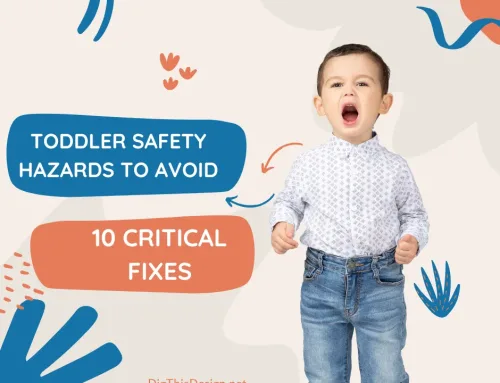Buying a house is a big decision, and it’s one that needs to be approached with special care and consideration. Moreover, it’s not something you can simply dive right into, as there are so many potential risks and concerns to take into account before you buy. This is why you need to prepare properly when visiting a home you’re interested in.
You might only get one opportunity to take a look at the place before a bidding war begins, and it’s easy to let yourself get distracted by things that aren’t all that important like the décor or the furniture. To help you make the most of house visits and tours, here are ten key things you must pay close attention to when buying a house.
What You Need to Know When Buying a House

1. Location and Neighborhood
One of the most important aspects to consider when buying a house is its location. What are the surrounding streets like? How close are essential amenities like schools and stores? Is it easy to get around? How is the traffic? These are all questions you need to consider, and it’s also worth taking a look at the neighbors’ homes too to see how well they’re maintained and give yourself a general idea of the neighborhood vibe.
2. House Plan
The plan or layout of a home is also very important. As you’re walking around, don’t simply admire the walls and furnishings of each room; look beyond the aesthetic elements and consider the sizes of the rooms and how they’re positioned. Does the layout work for you? Would you need to knock down any walls or expand any of the rooms? If so, that could lead to a lot of additional costs and complications.
When alterations are done to a home, it may influence the resale value and some areas may have specific laws about home improvements. If in doubt, contact conveyancing brisbane who would be able to provide information about the laws in the area.
3. Yard Size and Condition
Don’t forget to pay attention to the outdoor areas of the property too. The condition of a yard can often be a key indicator of the general condition of a home, as people who look after their yards tend to maintain their home’s systems and appliances too. Take a look at plants, fences, and note any trees which may start to overgrow and require tree trimming services to avoid any accidents or issues later on. Maintenance of the yard would be a given when buying a home and some plants or trees may need extra attention.
It is up to the new owners to decide whether they would want to keep up the maintenance or if they see the potential to change the current layout.
4. Heating and Cooling System
The HVAC (heating, ventilation, and air conditioning) system of any home is also very important. This is what helps to keep the indoor temperature pleasant and comfortable all through the year, helping you stay warm in winter and cool in summer. Take a close look at the heating and cooling system and be sure to call an HVAC contractor after moving in for a professional check-up, as this can help to identify and resolve any problems before they get worse, preventing air conditioning repair, leaks, and breakdowns in the future.
5. Roofs
Roofs often go overlooked when people are viewing or visiting a home, but it’s worth taking a look at them, as roof repairs can be very costly and damaged roofs can cause leaks and serious issues for homeowners to deal with. Of course, you won’t be able to actually get up on the roof for an up-close inspection, but it’s usually easy enough to spot a roof that is poorly maintained with loose or cracked shingles or tiles. Garage and shed roofs should be looked at, as well as the main house roof.
6. Marks of Water Damage
While walking around inside the home, take a close look at floors, walls, and ceilings and try to identify any damp patches or mold. It’s often quite easy to spot the signs of water damage in the form of brown or black spots, often in corners. See if you can detect any musty or mildew odors in the bathroom and kitchen, in particular, as these areas are often prone to water damage, and issues like leaks and mold can cause a lot of problems if left unattended.
7. Age of the House
You also want to consider the age of the house, so be sure to ask the owner or realtor for this information, if it hasn’t been provided already. There’s nothing necessarily wrong with buying an older home, but the simple fact of the matter is that older homes will be more prone to having issues with major systems and appliances like the HVAC system or the roof. Homes built before the 1980s might contain asbestos too.
8. Ownership History
As well as looking at the overall age of the house, it’s worth taking a look back through its history to see how many owners it has had, how long people tend to stay there, and how many times it has changed hands. A home that has lots of owners in a relatively short span of time might have some problems. It could be, for example, that issues in the neighborhood have encouraged previous owners to move away, or issues with the actual structure and foundation of the house could be to blame.
9. Uneven Floors, Cracks
It’s very important to take a look at the floors when visiting a home, as foundation and floor problems can be very costly to fix. If the home has any exposed concrete floors in areas like the garage or basement, watch out for cracks or uneven areas. Pay attention to doors as you open and close them too, in order to check that they don’t stick or require a lot of effort to push against the floor. The type of flooring can be important too, as carpets tend to be less hygienic and may be expensive to clean or replace.
10. Basement and Attic
While touring a home, make sure you take the time to see every single one of the rooms and spaces, and that includes the attic and basement. Sometimes, realtors might not necessarily go to the trouble of taking visitors to these spaces, but it’s important to check them out. As stated earlier on, you might spot damp patches or cracks in the basement, which could be problematic, and it’s important to look at the size of the attic, as well as checking out its insulation and general structure.
In Conclusion
A new home is a big commitment and responsibility, and there are quite a few aspects to consider before the final decision should be made. Think of your family’s needs in a home, such as the layout of the rooms, yard size, and basic features. Then you decide whether the house would meet your needs and preferences.
Houses that require some elbow grease to refurbish or fix could need utmost attention, especially when it’s an old home. Decide if it would be exciting for you to add personal touches, or if it sounds too laborious.
Just like people have different personalities, homes have their own character. The look and feel of a home should make you proud to be its owner. So, when weighing up the options, find the home that would be a match made in heaven for you and your family.
Images Courtesy of Canva.
Other Posts You Might Enjoy:
A Home for Your Family • How Big Is Enough?
9 of the Most Expensive Celebrity Homes of All Time





